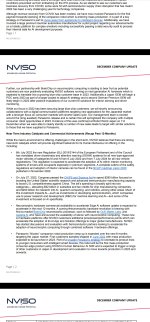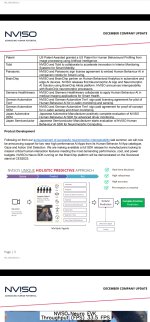Hi Fmf,
Following on from the link you posted, a little belated hindsight in the light of the Mercedes announcement 4 months later (
https://brainchip.com/mercedes-benz-vision-eqxx-concept/ ):
Akida spiking neural processor could head to FDSOI
Technology News |
August 2, 2021
By Peter Clarke
...
O
ne of the application areas of interest is automotive where Artificial Intelligence and Machine Learning (AI/ML) to train an increasing number of sensors, components, image and video processors in each vehicle. Autonomous vehicles and near-autonomous vehicles are predicted to generate between 12 and 15 terabytes of data for every two hours of driving.
Latency, power consumption and privacy are the key reasons not to send this data to the cloud for processing.
One advantage of spiking neural network architectures is the ability to perform real-time incremental learning, sometimes called one-shot learning, within a fraction of a second. The ability to add voice commands, accept individuals as drivers by facial recognition and to flag events as significant or not in sensors is improved when using Akida, said BrainChip executives. “We are being benchmarked against deep learning accelerators and a GPU vendor and it is coming back favourably to us.”
Note the present tense (August 22021) "We are being benchmarked ... ", ie, the benchmarking was going on in August 2021. Five months later we got the Mercedes announcement.
We know about the use of Akida for voice commands in Mercedes.
We also know that Mercedes compared (
benchmarked) Akida favourably with other voice recognition systems, providing 5 to 10 times better power efficiency than deep learning accelerators and a GPU vendor (Nvidia?).
We have speculated about other applications of Akida in Mercedes, so if we take a lead from the above-cited abstract, can we infer that facial recognition and significant event detection are included in EQXX, EQS, ... ?
... and don't mention Valeo ...
Now I wonder if the Sony/Prophesee deblurring camera could be useful in ADAS ...


